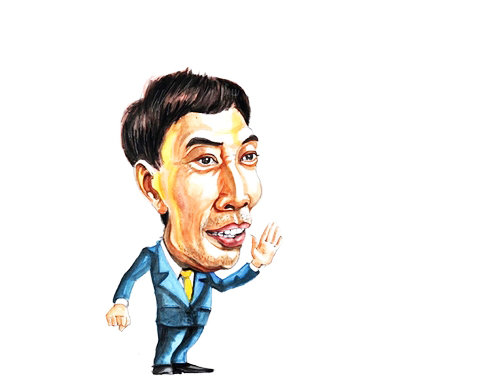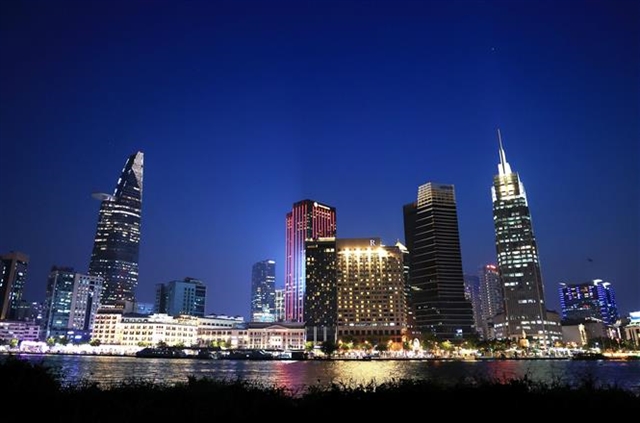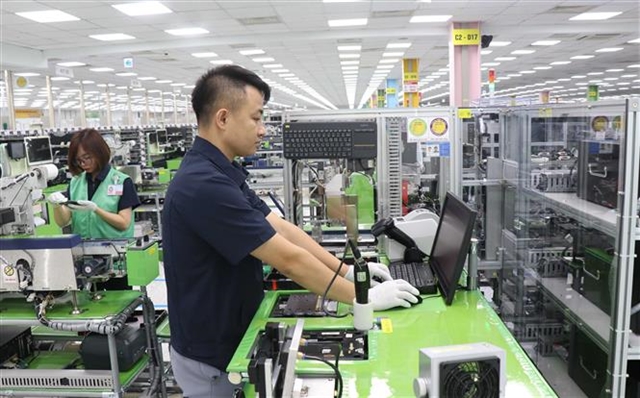 Economy
Economy

 |
| Võ Trí Thành |
*Võ Trí Thành
Vietnamese people have a well-known idiom they often invoke as the New Year comes: "When you eat new rice, talk about old things."
This reflects the understanding that the past and the present are inseparable in the flow of history. Reflecting on the past can enhance the present.
As we find ourselves in the early days of 2024, the Year of the Dragon, and Việt Nam, aspiring to transform like a dragon, stands before significant opportunities to achieve its ambitious goals.
I recall the early 1990s when I was studying in Australia, and there was talk about the "East Asian Miracle". The World Bank's 1993 report analysed the three decades of strong development in the Asian high-performing economies, of which the most outstanding ones included Japan and the four Asian Tigers: South Korea, Hong Kong, Taiwan (China) and Singapore, from the early 1960s to the early 1990s.
When discussing the success and strong development of these economies, experts pointed to factors such as relative macroeconomic stability, high savings and investment rates, developed labour force and infrastructure, competitive economies and export orientation. However, there were also debates around the achievements of these Tigers, such as the "picking winners policy" in various industries. The state still had some level of intervention in the market but was considered "market-friendly".
Later in East Asia, China emerged as an economic miracle and rose to become the world's second-largest economy. During its miraculous development, China's GDP growth reached around 9-10 per cent per year from the early 1980s to 2010. China became a phenomenon, transitioning into a high middle-income country. Although its growth slowed down in recent years, China's development continued to be associated more or less with the success story of reform, opening up and integration, especially after it joined the World Trade Organization (WTO) in 2001.
However, China's development also faced some controversies, such as the development of a state-controlled market and challenges in maintaining reforms in state-owned enterprises. Looking at these success stories, besides economic factors, it is essential to consider cultural factors behind them.
From the 1980s to the early 2000s, Southeast Asian countries like Thailand, Indonesia, Malaysia and the Philippines were also referred to as the second generation of Tigers/Dragons. However, this second generation in general seems to have fallen into the middle-income trap, unable to successfully transition from high middle-income to high-income countries amidst the global shift towards globalisation and more reliance on foreign direct investment for developing or underdeveloped nations.
In Việt Nam, after the Đổi Mới (Renewal) policy, in 1989, the country underwent significant reforms, embracing a socialist-oriented market economy. Between the 1990s and the early 2000s, international researchers discussed whether Việt Nam could follow the path of becoming a dragon or a tiger during its transition.
The book "Việt Nam – A Transition Tiger?" published in 2004 by Brian Van Arkadie and Raymon Mallon analysed various aspects of Việt Nam's reform process, business development and growth, arguing that Việt Nam's remarkable development was not built on mechanically replicating a set of reform plans but on practical responses to the country's specific circumstances. Despite doubts, the extensive international discussions reflected Việt Nam's potential, aspirations and capabilities in leaping into higher level of development.
 |
| Along the Saigon River in the centre of HCM City. Việt Nam has set a goal to become a developed, high-income country by 2045. — VNA/VNS Photo Hồng Đạt |
Việt Nam has set a goal to become a developed, high-income country by 2045, coinciding with the 100th anniversary of its establishment. Although more than 20 years remain to reach this milestone, it is considered a significant ambition, especially considering the challenges faced by many other nations.
Professor Fukunari Kimura, the Chief Economist of the Economic Research Institute for ASEAN and East Asia (ERIA), notes that previously, some countries successfully jumped from high middle-income to high-income levels, like Japan and South Korea. However, these achievements occurred before the intense globalisation of the 1990s.
The major challenge for countries like Việt Nam, according to him, is not the middle-income trap but the absence of any country achieving high-income status directly through globalisation and becoming a developed nation.
In his view, Việt Nam is one of the most promising countries to achieve this due to its ability to leverage both trade and investment, assimilate industrialisation, and create economic development for itself. Additionally, the country needs to maintain openness, maximise opportunities from globalisation, and be autonomous in economic development.
Việt Nam faces significant challenges but also stands before golden opportunities. The country is setting new development goals, focusing on sustainable and inclusive development, placing humans at the centre, fostering innovation, and aiming for high growth while ensuring environmental sustainability. These are ambitious goals and challenging to achieve.
According to the 2045 vision, with a goal of becoming a high-income country, Việt Nam's average GDP per capita growth rate from 2024 onwards should be around 5.4-5.5 per cent per year. Other challenges such as capital, environment, technology, institutional reform, policies, human resources, and especially the net-zero target by 2050, also pose significant hurdles in reaching these objectives.
Việt Nam is dealing with substantial challenges, including constant changes in the international landscape. Being a highly open country, Việt Nam's policies must be extremely flexible. Traditional policy tools are narrowing due to these changes. International issues, such as geopolitical conflicts and competition among major countries, are likely to persist, posing risks of economic, technological and financial fragmentation. This can impede global resource allocation efficiency, creating a deadlock for the development of smaller nations. Other risks, such as climate change and extreme weather, bring uncertainties and various forms of challenges.
However, amidst challenges, there is also a golden opportunity. In addition to efforts to catch up with larger countries, Việt Nam has the chance to align with them in the digital and green transformation. The world is restructuring, reshaping supply chains, investments and shifting high-quality labour. This process will create new development dynamics alongside traditional resources.
 |
| Inside Samsung Electronics Vietnam's factory in Yên Phong industrial park, Bắc Ninh Province. Việt Nam should leverage both trade and investment, assimilate industrialisation, and create economic development for itself. — VNA/VNS Photo Thanh Thương |
So, what does Việt Nam need to do to realise its dragon-like aspirations? Lessons from the past combined with experiences from the development processes of other countries may not guarantee success in the future. Fundamentally, Việt Nam has no choice but to continue the renovation process. Alongside efforts to improve existing frameworks and traditions, Việt Nam needs to establish new legal foundations for innovative reforms related to data exchange, intellectual property ownership, sandbox mechanisms and building high-quality human resources.
Governance processes must also account for new factors. While decisions were previously top-down, the current approach requires speed, flexibility, consideration of all stakeholders' interests, and experimentation to gain experience in policy implementation (learning by doing).
Economic restructuring should continue, incorporating traditional reforms such as state-owned enterprise reforms, financial and public investment reforms, with new trends like green and digital transformations, supply chain shifts, and creating an attractive and highly competitive business environment.
Regarding infrastructure, besides well-planned roads, ensuring clean energy, large-scale logistics projects, digital infrastructure, and high-quality human resources are crucial. Education reform should focus on higher education and postgraduate levels to nurture elite classes, promoting innovation and mastery of core technologies.
In conclusion, Việt Nam is facing considerable challenges and risks, but it also has the opportunity to stride alongside major nations during the digital and green transformation. Success will depend on continuous efforts, flexibility in policies, and the ability to adapt to a changing international landscape. The country needs to navigate through uncertainties, leveraging its strengths to turn challenges into opportunities, ultimately achieving its ambitious development goals and showing the world an image aptly described as the "Dragon on internet", moving away from the "Tiger on a bicycle" perception that sometimes they used to "joke" about Việt Nam in the early 1990s.
*Võ Trí Thành is a senior economist at the Central Institute for Economic Management (CIEM) and a member of the National Financial and Monetary Policy Advisory Council. A doctorate in economics from the Australian National University, Thành mainly undertakes research and provides consultation on issues related to macroeconomic policies, trade liberalisation and international economic integration. Other areas of interest include institutional reforms and financial systems. He authors Việt Nam News column Analyst’s Pick.




